Top 7 software development use cases of Generative AI
As we’ve discussed, content generation is one major area where generative AI can pack a punch for marketers. It’s also probably the topic you’ve seen taking up endless LinkedIn feed real estate as thought leaders weigh in on the benefits and pitfalls of gen AI for content creation. This article highlights enhancing data teams’ efficiency by implementing observability. This approach provides insights into data systems, enabling quicker issue detection and resolution.
Enterprise-grade Generative AI for Enterprises – Pipeline Magazine
Enterprise-grade Generative AI for Enterprises.
Posted: Thu, 07 Sep 2023 00:48:42 GMT [source]
With inverse design, generative AI assesses missing materials in a process and generates new materials that fulfill the required properties for that environment. AI-driven drug discovery is one of the areas of generative AI that is receiving the most funding right now, so expect this particular enterprise use case to grow significantly in the coming months and years. Few tools have been officially brought to market, but a number are in beta and early adopter trials. Many early adopters of this technology are building custom customer service solutions with the help of OpenAI’s API and ChatGPT. Examples of customer service generative AI solutions are dramatically changing the chatbot landscape by offers longer service hours at far cheaper cost.
Grow with our latest insights
This is especially helpful for marketing campaigns where businesses must produce large amounts of content quickly and efficiently. The advent of prominent generative AI tools like ChatGPT and Midjourney has prompted many to better understand what generative AI is. Moreover, generative AI applications and tools are empowering both organizations and individuals to automate tedious tasks, make better decisions, and streamline operations for maximum efficiency. Here’s a deeper look into generative AI, its benefits, models, known risks, and popular examples. Generative AI’s capabilities and accessibility are unprecedented, giving the automation space in any sector the potential to use and benefit from it.
Start by building a cross functional team to spot areas where generative AI can be used, like content creation or data analysis. Literally everything they create, from music to videos to text, is based on existing material that belongs to someone else. You only have to enter a text based prompt to generate unique content that resembles the training data.
Use cases in visual content
The result is faster and more versatile design iterations than ever before and thus better user experience for clients. Through the integration of advanced technologies such as modeling, drones, and prefabrication methods, the Yakov Livshits industry has transitioned from traditional manual processes to a more efficient and digitally-driven approach. This shift has facilitated enhanced project management, cost control, and accelerated construction timelines.
It’s a great online tool that helps educators effortlessly transform their text-based documents into an engaging video training featuring a human face, establishing a deeper connection with the viewers. Here’s where you have to choose between buying or building your generative AI experience from scratch. If you prefer, you can directly integrate with the API of OpenAI or similar services like Claude or Google Bard. This will allow you to customize and build a solution that is tailored to your specific needs and can be more closely integrated with your internal tools.
6 min read – IBM Db2 keeps business applications and analytics protected, highly performant, and resilient, anywhere. No matter how much input an AI receives during training, the system ultimately only knows what it’s been taught. Models take time to assimilate changes, and a dynamic IT environment might move too quickly for the AI to respond in time to configuration changes or unexpected situations. Despite its potential and promise, generative AI currently has notable limitations for IT and DevOps that could present obstacles to adoption for many organizations.
Yakov Livshits
Founder of the DevEducation project
A prolific businessman and investor, and the founder of several large companies in Israel, the USA and the UAE, Yakov’s corporation comprises over 2,000 employees all over the world. He graduated from the University of Oxford in the UK and Technion in Israel, before moving on to study complex systems science at NECSI in the USA. Yakov has a Masters in Software Development.
Generative AI can be used to automate customer service processes, such as chatbots and virtual assistants. By understanding natural language and context, generative AI can provide personalized responses and assistance to customer queries, improving customer satisfaction and reducing the workload on customer service teams. By embracing generative AI, FinTech companies can leverage its potential in computer vision, asset management, neural network structures, and data augmentation. This transformative technology revolutionizes the analysis of visual data, optimizes portfolio management, enhances neural network architectures, and augments datasets to improve AI model performance. By harnessing the power of generative AI, FinTech organizations can unlock new avenues of innovation and gain a competitive edge in the rapidly evolving financial landscape.
The generative AIs such as the ChatGPT can generate a legal contract based upon the criteria and terms on which involved parties agree. This saves time, effort, and money for everyone and streamlines processes between two parties to begin the execution of the contract early without any hassles. Using the generative AIs GAN models, banks can create scenarios such as loss with near real-life data.
Sentiment analysis, which is also called opinion mining, uses natural language processing and text mining to decipher the emotional context of written materials. An audio-related application of generative AI involves voice generation using existing voice sources. With STS conversion, voice overs can be easily and quickly created which is advantageous for industries such as gaming and film. With these tools, it is possible to generate voice overs for a documentary, a commercial, or a game without hiring a voice artist. It is also possible to use these visual materials for commercial purposes that make AI-generated image creation a useful element in media, design, advertisement, marketing, education, etc. An image generator, for example, can help a graphic designer create whatever image they need (See the figure below).
This Generative AI use case demonstrates how these models can assess spending patterns. Generative AI enables autonomous vehicles to perceive and interact with their surroundings. AI models can analyze sensor data, predict road conditions, and generate appropriate responses, ensuring safe and efficient self-driving experiences. Whether creating new video games, generating text and images, or improving image recognition systems, generative AI already has a significant impact, and there’s no telling what it will do next. The AI is trained to accentuate, tone, and modulate the voice to make it more realistic. In simpler terms, neural networks are a type of artificial intelligence made up of lots of little brain cells (neurons) connected to each other.
Generative AI-powered airport chatbot assists travelers with flight information, directions, and other queries. For instance, it checks flight history and preferred comforts, recommend services, such as dining options or selling offerings. Predicting demand and adjusting stock levels accordingly helps ensure the availability of essential products and services for passengers.
- Acumen predicts that the Generative AI market will grow and be worth $110.8 billion USD by 2030.
- Generative AI can help businesses predict demand for specific products and services to optimize their supply chain operations.
- Again, as a marketer, the video creation process is something that we’re painfully aware of.
- For example, American Family Insurance’s American Family Ventures arm recently wrote about “InsuranceGPT” and a few potential examples of generative AI being used by insurance firms.
In 2023, the state-of-the-art generative AI has been marked by rapid advances in LLMs, with models containing billions or even parameters. These models can generate high-quality text, create photorealistic images, and even produce entertaining content on the fly. Innovations in multimodal AI have enabled content generation across multiple media types, including text, graphics, and video.
The hype will subside as the reality of implementation sets in, but the impact of generative AI will grow as people and enterprises discover more innovative applications for the technology in daily work and life. Generative AI can help auditors to spot and flag audit abnormalities for further examination. When incorporated with human evaluation correctly, generative AI tools can be useful in identifying potential fraud and enhancing internal audit functions. HR departments often need to come up with a set of questions to ask job candidates during the interview process, and this can be a time-consuming task.

















































